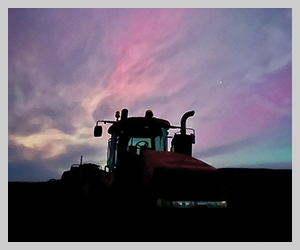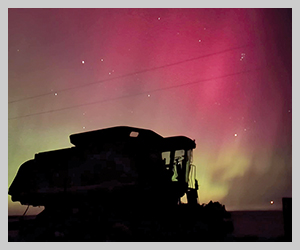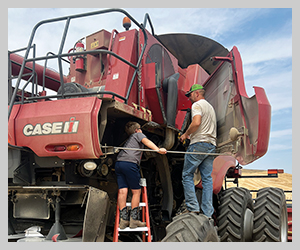Future uncertainty will require careful management
2022March 2022
By Dr. David Kohl
Professor Emeritus, Virginia Tech

The financial bottom line will be a key element in any farm and ranch game plan in 2022 and beyond. While the past two years have been both financially and mentally challenging, managing through uncertainty has had a silver lining. Prices for many commodities increased dramatically prior to inflating costs, which resulted in a positive margin for many producers. Coupled with generous government payments, the last two years were the strongest economically for some producers since the commodity super cycle from 2008 to 2013.
Moving forward, inflation, uncertainty in prices and multiple interest rate increases will require intensified management. A three-pronged approach of managing input costs and roller-coaster prices will be a tall order. The Federal Reserve has forecasted three and possibly four interest rate increases in 2022. This will require a closer examination of how a 50, 75 or 100 basis point increase in interest rates will impact debt structured on a variable rate, and how it will impact cost of production and breakevens.
On the input side, sticker shock is challenging most businesses and, to some extent, consumers. Both the consumer and producer price index have been tame since the mid-1990s with inflation generally under 5 percent. Now, inflation rates are above 5 percent with a duration of nearly one year. While not at levels experienced during World War II or post-World War II in the 1970s where inflation was 15 percent, these increases have been challenging. Many people are questioning how long this period of inflation will last. As long as there are oil and energy supply and demand imbalances, supply chain issues and labor shortages with wage increases, inflated costs will be in the management playbook.
On the revenue side, monitor the weather in the major production regions of the globe for signals of market price increases. Next, changes in trade deals on the export side and geopolitical or military challenges of major world powers will ultimately have an effect on your management strategies.
What can you do as an individual agriculture producer to position yourself for the best possible financial outcome?
First, develop a projected cash flow with a wide array of financial sensitivity outcomes given different cost, production and price scenarios. If you have multiple enterprises, make sure you develop and refine your enterprise budgets. More than half of producers anonymously polled during a recent seminar indicated that conducting enterprise analysis was one practice that placed them ahead of the curve.
In your budgets, each line must be carefully scrutinized in an inflationary environment. Recently, some producers have mentioned that after conducting their analysis, they actually eliminated marginal or less productive ground, irregular fields, landlords that gave them hassle or enterprises that did not align with their future goals. A best practice each year is to not only consider what you want to grow, but also what you need to eliminate.
A best management tool for the financial bottom line will be a projected cash flow that is monitored more than once a year. Some individuals are now monitoring not only quarterly, but monthly and, in some cases, weekly. This is what allows them to adjust operating strategies and actions as conditions change. Remember, both good and bad decisions compound over time, but in an inflating environment, the differences accelerate at an exponential rate.
A risk management plan will be a high priority in 2022 and beyond. While speculation and greed may have paid in the last two years, following a disciplined marketing and risk management plan will pay dividends in the economic cycle ahead. Following the process with a focus on knowing your break-even cost of production in an inflationary environment will be a key for success. Some of you may want to go it alone. While that is okay, I find that the top-level managers who utilize the assistance of advisory teams often have a broader view.
Finally, your bottom-line analysis requires a close examination of your balance sheet. Should losses occur, what is your backup plan? The answer is usually working capital, which is current assets minus current liabilities. Hopefully, in your business strategy, you were able to build some reserves for margin adversity in the past couple of years. A current ratio above 1.5 to 1 or working capital divided by expenses greater than 25 percent would provide for some of that reserve.
While challenging and uncertain, the economic environment ahead can be advantageous for the good manager. In this part of the economic cycle, following the process and focusing on those small profit windows can result in a favorable bottom line.
Dr. David Kohl is an academic hall-of-famer in the College of Agriculture and Life Sciences at Virginia Tech in Blacksburg, Va. Dr. Kohl is a sought-after educator of lenders, producers and stakeholders with his keen insight into the agriculture industry gained through extensive travel, research and involvement in ag businesses. This content provided by Northwest Farm Credit Services.












